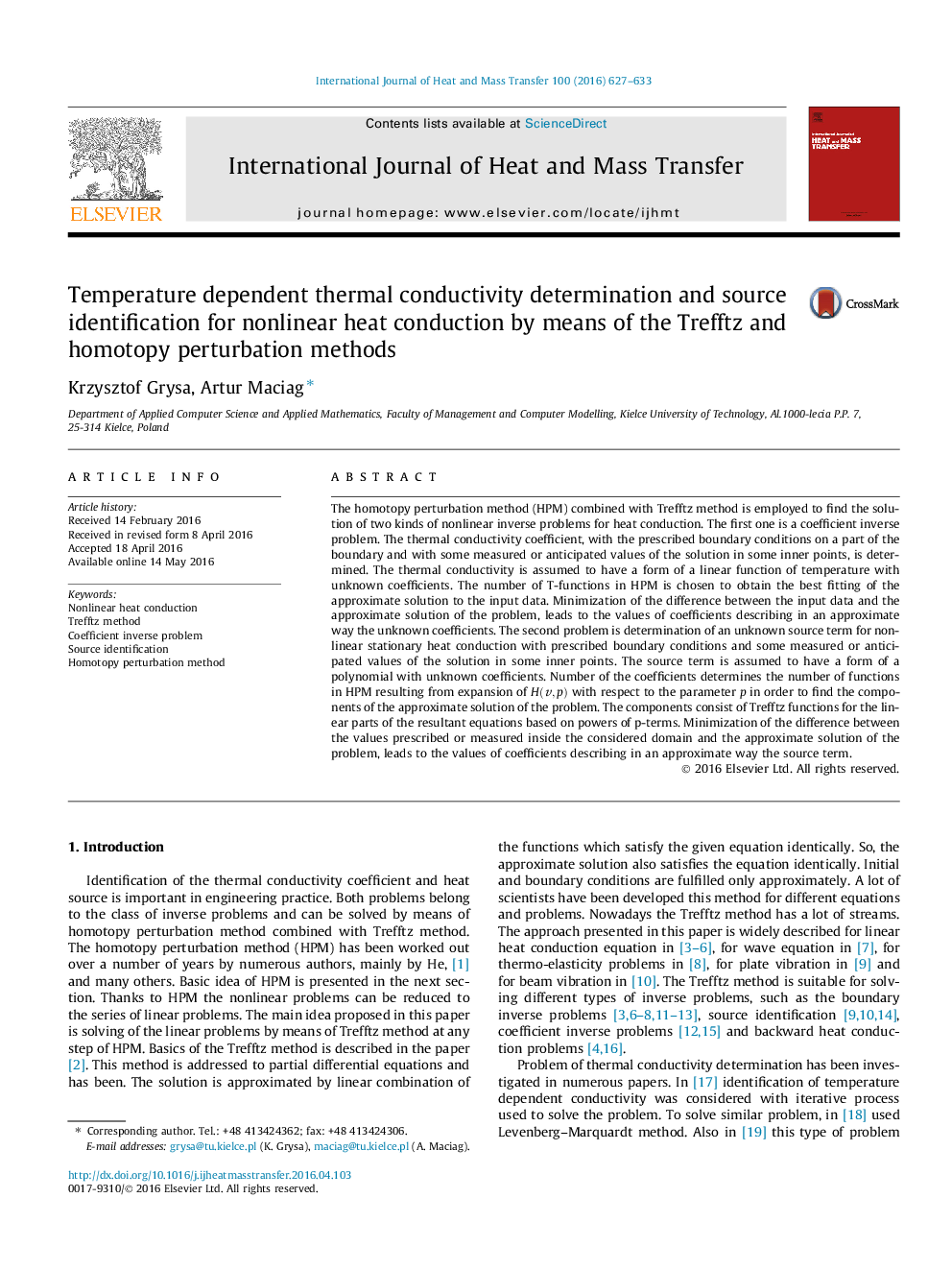| Article ID | Journal | Published Year | Pages | File Type |
|---|---|---|---|---|
| 656390 | International Journal of Heat and Mass Transfer | 2016 | 7 Pages |
•Identification of the thermal conductivity coefficient.•Identification of the source function for linear and nonlinear operator.•Trefftz method combined with homotopy perturbation method.•Solution of the nonlinear inverse problems.
The homotopy perturbation method (HPM) combined with Trefftz method is employed to find the solution of two kinds of nonlinear inverse problems for heat conduction. The first one is a coefficient inverse problem. The thermal conductivity coefficient, with the prescribed boundary conditions on a part of the boundary and with some measured or anticipated values of the solution in some inner points, is determined. The thermal conductivity is assumed to have a form of a linear function of temperature with unknown coefficients. The number of T-functions in HPM is chosen to obtain the best fitting of the approximate solution to the input data. Minimization of the difference between the input data and the approximate solution of the problem, leads to the values of coefficients describing in an approximate way the unknown coefficients. The second problem is determination of an unknown source term for nonlinear stationary heat conduction with prescribed boundary conditions and some measured or anticipated values of the solution in some inner points. The source term is assumed to have a form of a polynomial with unknown coefficients. Number of the coefficients determines the number of functions in HPM resulting from expansion of H(v,p)H(v,p) with respect to the parameter p in order to find the components of the approximate solution of the problem. The components consist of Trefftz functions for the linear parts of the resultant equations based on powers of p-terms. Minimization of the difference between the values prescribed or measured inside the considered domain and the approximate solution of the problem, leads to the values of coefficients describing in an approximate way the source term.
